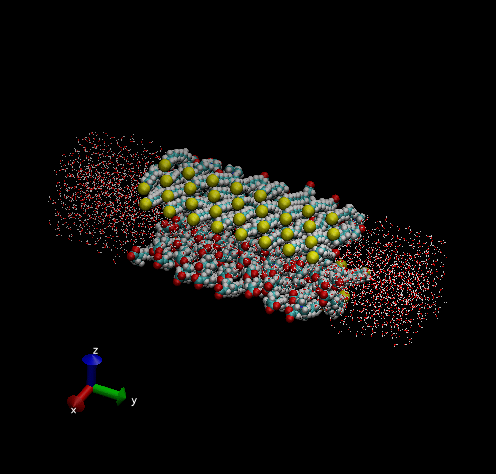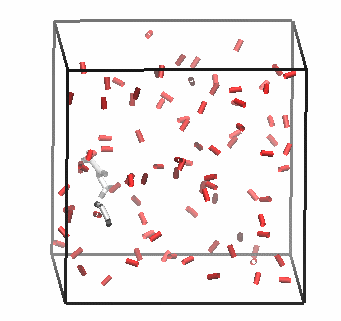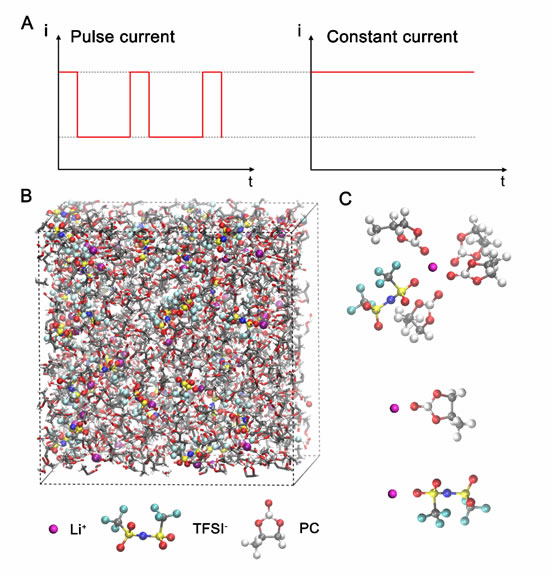Research
(1) Biomaterials for Joint Lubrication or Stent Coatings
Biomaterials exhibiting ultralow friction and nonfouling properties are highly desirable for many applications such as biosensors, artificial joints, stents, and marine coatings. The properties of biomaterials are largely determined by the interactions of atoms at the molecular level. Therefore, we use atomistic molecular simulations to examine the interactions between atoms within/nearby biomaterials. Our goal is to obtain design principles of biomaterials and use these principles to develop biocompatible and environmentally benign biomaterials for various applications.
Molecular Design of Ultralow Friction Biomaterials

(2) Reaction and Transport in External Electric Fields
While experimental studies have shown that external electric fields may significantly affect chemical reactions, there is still a lack of detailed understanding on the exact role of external electric fields, especially when reaction and diffusion of various species in reactions need to be considered simultaneously. Advanced molecular simulation technologies such as ReaxFF molecular dynamics have shown to be powerful tools for addressing these challenges. Our goal is to achieve fundamental understanding from these simulations so that a 'smart' control of chemical reactions is possible. The success of this goal may not only help the rational design of environmentally friendly chemical processes, but also reduces the production cost of materials.
1) Toluene Oxidation in External Electric Fields

2) Pulse Charging for Lithium Metal Batteries (Joint Study with Dr. Yingying Lu's group)

(3) CO2 Capture and Conversion
The development of efficient technologies for the capture and sequestration of carbon dioxide produced by existing point sources, such as fossil-fuel power plants and blast furnaces, will prove critical in controlling the environmental impact of anthropogenic emissions. In order for these technologies to be economically viable, carbon capture and sequestration (CCS) systems must curb the energy penalty associated with CO2 capture and sorbent regeneration, and operate effectively in realistic conditions. Our goal is to develop techologies that fulfill the criteria of an efficient CO2 sorbent / absorbent, which has been proceeding with urgency.